Running stitch is primarily used for borders and accent details. I’ve seen it trimming the bottoms of tea towels—a nice way to pick up some of the colors from your main image. This example is interesting because it shows the difference in how it looks if you keep your threads smooth so they fan out (top) or twisted like a braid (bottom). Either way is fine, just be consistent in each line that you do.
You can use it for stem-like scrolls—
And for structural elements—a trellis for flowers or a border like this Greek-key design.
Bring your thread to the front on the right hand side of the line to be stitched. I didn't draw a line because my fabric is linen and it's easy to use the holes in the weave as a guide. Take a small stitch, skimming your needle underneath the fabric along the line.
Pull your thread through, then take another stitch. Keep both the stitch length and the space in between the same each time. This is super easy when using linen—just count the same number of threads each time. At the end of the line weave your threads in at the back. And that's it.
I almost feel like I'm cheating you this time around—it's so simple. So I'll add a variation called a Whipped Running Stitch. This is a nice way to add a second color to your work and makes a great-looking braided line.
After you've completed a line of running stitch, change your thread color. Bring the thread to the front just below the center of the first stitch on the right hand side.
Take your needle from top to bottom under the second stitch, making sure that you don't split the thread or pierce the fabric.
Pull the thread through keeping the tension loose. Take the needle from top to bottom under the third stitch; pull through.
Continue to the end of the line and take your thread to the back under the center of the last stitch. Here's what it looks like finished—





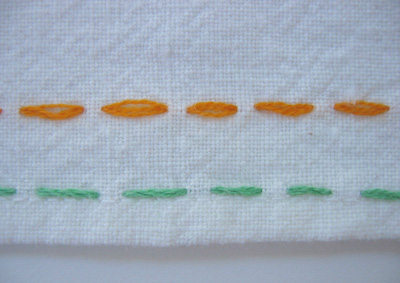
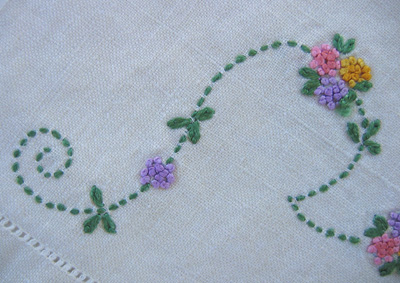

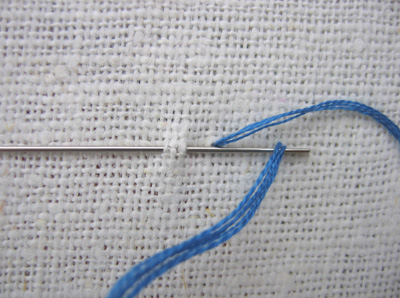
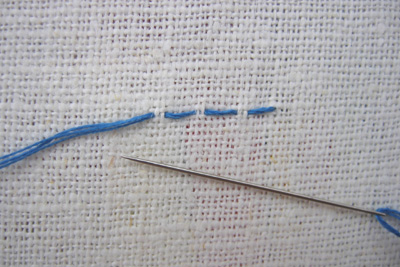
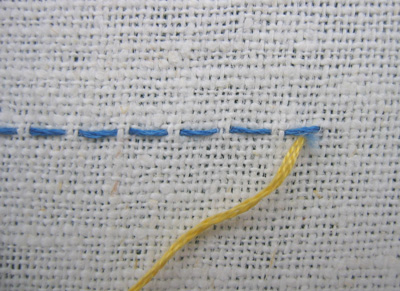
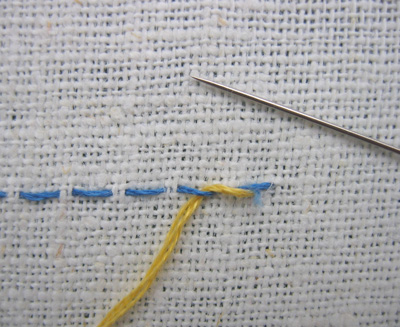
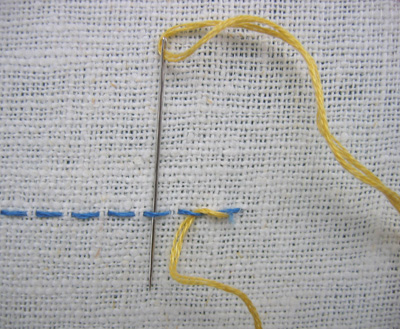



2 comments:
I am really appreciating all of this and thinking I maybe should print these definitions and examples to refer back to when I am up late sewing little felt projects for my little one... :)
I think this stitch is fantastic when working with specialty threads, like glow-in-the-darks or metallics. Metallics are super-difficult to work with, and this is a clever way to get some of the work whipped out without much fuss. Just use the running stitch in an easy-to-use thread, and whip it with the more difficult thread. I recommend trying to get the colors close to each other.
Post a Comment